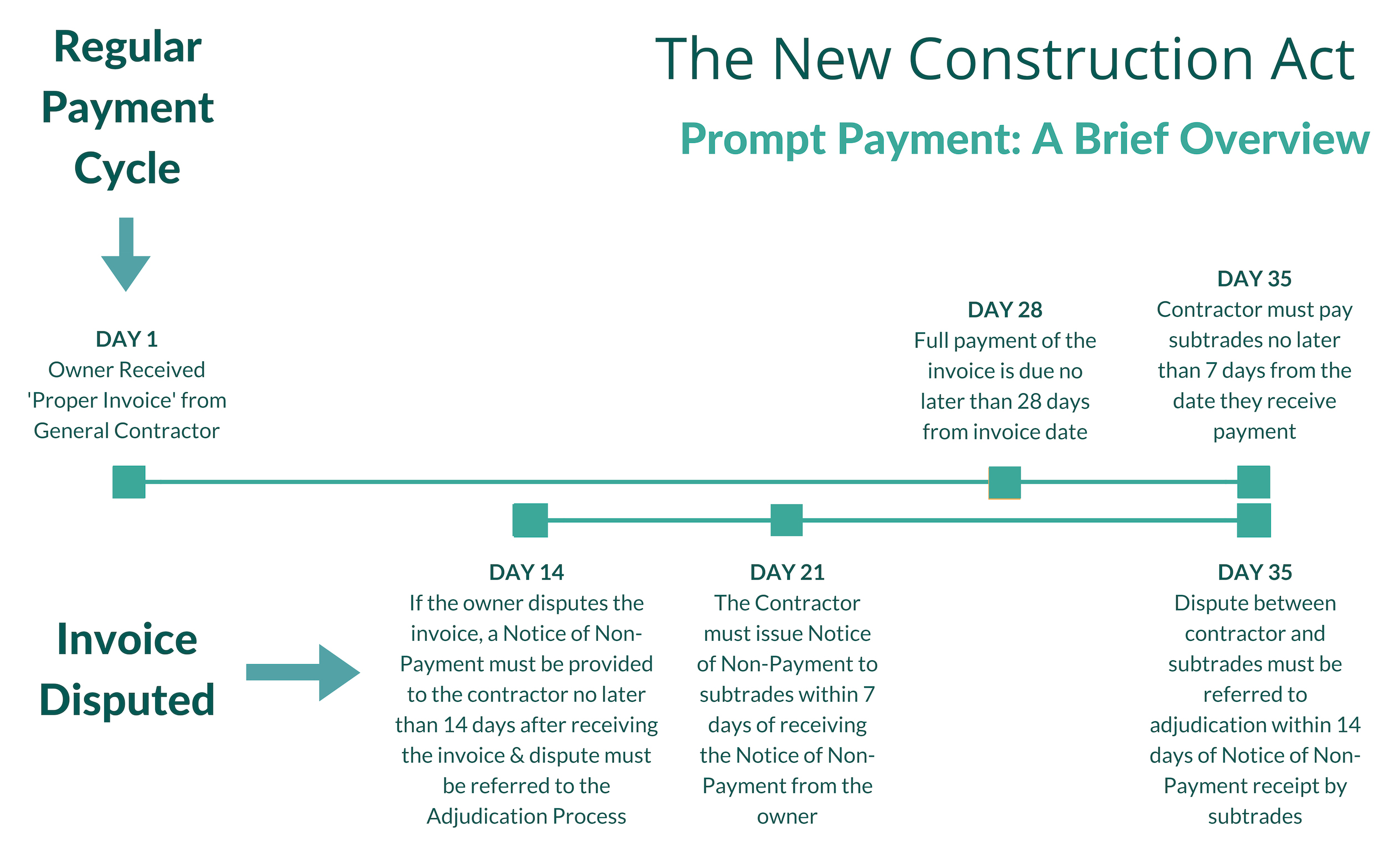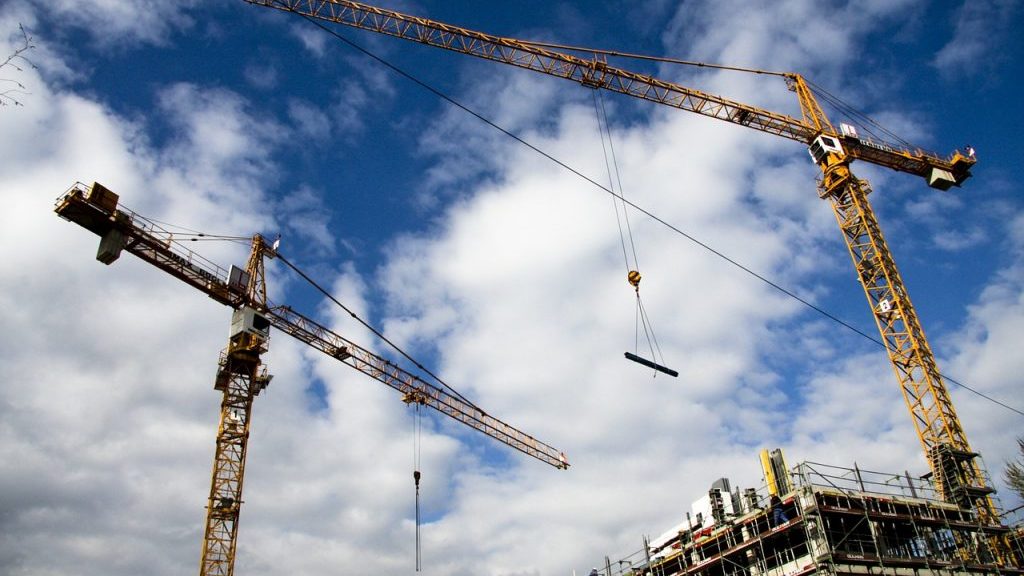FCA Surety is a surety bond broker that has been providing surety expertise to the construction industry for over 99 years. The following is an analysis they’ve generated which looks at Ontario’s new Construction Act and some of its implications.
Bill 142: What’s in it for subcontractors?
On July 1, 2018, the first part of Ontario’s new Construction Act came into effect. The Construction Act is the most wide-ranging change of rules in the construction industry in Ontario since 1983. These broad changes are going to have a major impact on our industry.
Under the new prompt payment rules, the industry can expect to see a much faster flow funds from project owners all the way down to sub-trades and suppliers. This will lead to fewer hung receivables and better cash flow across the industry as a whole. When future disputes do arise between parties, the new adjudication rules should also provide a faster and clearer path towards resolution. Sureties are also required to be much more responsive when dealing with performance and labour and material payment bond claims. The overall intention is to keep projects and the flow of funds moving forward and to provide a fairer marketplace for all parties. While we cannot focus on all of the changes, there are a few key ones that are important to understand for all subcontractors.
Prompt Payment — Improving the Flow of Contract Funds
Under the new prompt payment rules, which will come into effect on Oct. 1, 2019, an owner must pay a contractor within 28 days of receiving a ‘proper invoice’, unless the owner delivers a notice of non-payment in the prescribed form within 14 days. This is a significant improvement from the past, when sub-trades were often forced to wait up to 90 days or even longer for payments.
A ‘proper invoice’ must:
- describe the services or materials supplied;
- the period during which they were supplied; and
- the authority under which they were supplied.
A contractor who receives full payment from an owner must then pay any subcontractor within 7 days of the date they receive payment. If for any reason the contractor fails to make this payment, they must provide a written notice of non-payment to the subcontractor to explain the reasons for non-payment.
There of course will still be cases where an owner refuses to pay a contractor due to a dispute; however, the New Construction Act responds to this as well. In these cases, the contractor must either:
pay the subcontractor within the prescribed 35 day period with their own funds; or
if the contractor is unable to make this payment, they must deliver a notice of nonpayment to the subcontractor explaining the reason for the delay
In the latter situation, the matter must then be referred to adjudication within 14 days.

Mandatory Surety Bonding on Ontario Public Contracts
Bill 142 includes a provision to require a minimum of 50 per cent performance and 50 per cent labour and material payment bonds from contractors performing work under public contracts signed after July 1, 2018 and valued at $500,000 or more. This includes all contracts with the Ontario Crown, local municipalities or any other broader public sector entity including the MTO.
A More Responsive Surety
Under the new act, sureties must now follow mandatory response times to claims:
- Performance bond claims: The surety will have four business days to acknowledge a claim and request documents in the prescribed form. The surety must then provide its position within 20 business days from date of claim.
- Labour & Material Payment bond claims: The surety is required to acknowledge and request information within three business days after receiving the initial notice of claim. The surety must then provide its written notice the earlier of 10 business days after receiving information from the claimant, or 25 business days after the initial notice of the claim.
- Payment of Labour & Material Payment bond claims: The surety will have 10 days after providing its written position to pay any undisputed amounts.
Given these improved requirements, many sureties have already taken the step to strengthen their internal claims departments by hiring additional staff members and building out more efficient processes in order to meet these timelines.
Changes to Holdback Provisions
Given that most large construction projects take more than 12 months to complete, the new legislation provides for holdback payment on an annual, phased or segmented basis. This new release of holdback is the new standard once the conditions have been satisfied, which is essentially as soon as the deadline to register or deliver a lien has passed. However, it is important to note that the Act still provides a contractor with the ability to withhold some or the entire amount of the holdback, conditional upon the contractor publishing a notice of non-payment in the manner as described by the Regulations.
A New Process to Resolve Disputes
The introduction of adjudication as a means for dispute resolution is a significant change for the industry. The new process is intended to provide a path to the faster settlement of disputes related to these specific matters.
- The valuation of services or materials provided under the contract;
- Payment under the contract, including in respect of a change order, whether approved or not, or a proposed change order;
- Non-payment of a holdback; or
- Any other matter that the parties to the adjudication agree to, or that may be prescribed by regulation.
The determinations of the adjudicators are binding on the parties once the determination is made. Following this decision, any amount determined to be owed must then be paid within 10 days.
A Brighter Future for All
When there is a major failure in the construction industry, it has the ability to cause widespread financial pain and duress across our industry. The common consensus has been that the industry fails to recognize potential failures in time before they reach the level of catastrophe. With these changes, there is renewed optimism that the improvements under the New Construction Act will lead to the quicker identification of concerns, which should help to minimize the effects of the next major failure. At the very least, subtrades should be alerted to the probability of serious issues earlier on, helping to minimize the wider spread exposures across the industry. In addition, sureties will no longer be able to delay claims in support of their clients. With these new regulations in place, the industry is now going to be supported by much more responsive sureties in times of crisis.
For more information about FCA Surety and to stay up to date on the changes to the new Construction Act, visit www.whatissurety.com. To contribute a column idea to the Daily Commercial News or to comment on this piece, please email editor@dailycommecialnews.com.











Recent Comments